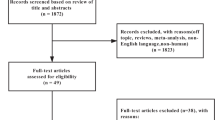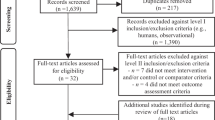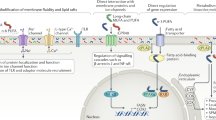Abstract
To investigate the effects of rapeseed oil on body composition, blood glucose and lipid metabolism in people with overweight and obesity compared to other cooking oils. We searched eight databases for randomized controlled studies (including randomized crossover trials). The risk of bias for the included studies was assessed using the Cochrane Risk of Bias 2.0 tool. The Grading of Recommendations Assessment Development and Evaluation (GRADE) criteria were used to evaluate the quality of the outcomes. The methodological quality of the included studies was assessed using the Physiotherapy Evidence Database (PEDro) scale. Sensitivity analysis was used to check the stability of the pooled results. Statistical analysis was carried out using Review Manager 5.3 software. As a result, fifteen randomized controlled studies (including six parallel studies and nine crossover studies) were included in this study. Compared to other edible oils, rapeseed oil significantly reduced low density lipoprotein cholesterol (LDL-C) (MD = −0.14 mmol/L, 95% CI: −0.21, −0.08, I2 = 0%, P < 0.0001), apolipoprotein B (ApoB) (MD = −0.03 g/L, 95% CI: −0.05, −0.01, I2 = 0%, P = 0.0003), ApoB/ApoA1 (MD = −0.02, 95% CI: −0.04, −0.00, I2 = 0%, P = 0.02) and insulin (MD = −12.45 pmol/L, 95% CI: −19.61, −5.29, I2 = 37%, P = 0.0007) levels, and increased fasting glucose (MD = 0.16 mmol/L, 95% CI: 0.05, 0.27, I2 = 27%, P = 0.003) levels. However, the differences in body weight and body composition between rapeseed oil and control oils were not significant. In a word, rapeseed oil is effective in reducing LDL-C, ApoB and ApoB/ApoA1 levels in people with overweight and obesity, which is helpful in preventing and reducing the risk of atherosclerosis. PROSPERO registration number: CRD42022333436.

This is a preview of subscription content, access via your institution
Access options
Subscribe to this journal
Receive 12 print issues and online access
$259.00 per year
only $21.58 per issue
Buy this article
- Purchase on Springer Link
- Instant access to full article PDF
Prices may be subject to local taxes which are calculated during checkout





Similar content being viewed by others
Data availability
Published data used for the systematic review and meta-analysis are available from the authors.
References
Afshin A, Forouzanfar MH, Reitsma MB, Sur P, Estep K, Lee A, et al. Health Effects of Overweight and Obesity in 195 Countries over 25 Years. N. Engl J Med. 2017;377:13–27. https://doi.org/10.1056/NEJMoa1614362.
Lu B, Zhong J, Pan J, Yuan X, Ren M, Jiang L, et al. Gdf11 gene transfer prevents high fat diet-induced obesity and improves metabolic homeostasis in obese and STZ-induced diabetic mice. J Transl Med. 2019;17:422. https://doi.org/10.1186/s12967-019-02166-1.
Huang JY, Qi SJ. Childhood obesity and food intake. World J Ped : WJP. 2015;11:101–7. https://doi.org/10.1007/s12519-015-0018-2.
Jia P, Luo M, Li Y, Zheng JS, Xiao Q, Luo J. Fast-food restaurant, unhealthy eating, and childhood obesity: A systematic review and meta-analysis. Obes Rev. 2021;22:e12944. https://doi.org/10.1111/obr.12944.
Roblin L. Childhood obesity: food, nutrient, and eating-habit trends and influences. Appl Physiol Nutr Metab. 2007;32:635–45. https://doi.org/10.1139/h07-046.
Kalish VB. Obesity in Older Adults. Prim Care. 2016;43:137–44. https://doi.org/10.1016/j.pop.2015.10.002.
Bales CW, Porter Starr KN. Obesity Interventions for Older Adults: Diet as a Determinant of Physical Function. Adv Nutr. 2018;9:151–9. https://doi.org/10.1093/advances/nmx016.
Mathus-Vliegen EM. Obesity and the elderly. J Clin Gastroenterol. 2012;46:533–44. https://doi.org/10.1097/MCG.0b013e31825692ce.
Kumar S, Kelly AS. Review of Childhood Obesity: From Epidemiology, Etiology, and Comorbidities to Clinical Assessment and Treatment. Mayo Clin Proc. 2017;92:251–65. https://doi.org/10.1016/j.mayocp.2016.09.017.
Thomas-Eapen N. Childhood Obesity. Prim Care. 2021;48:505–15. https://doi.org/10.1016/j.pop.2021.04.002.
Dabas A, Seth A. Prevention and Management of Childhood Obesity. Indian J Ped. 2018;85:546–53. https://doi.org/10.1007/s12098-018-2636-x.
Jensen MD, Ryan DH, Apovian CM, Ard JD, Comuzzie AG, Donato KA, et al. 2013 AHA/ACC/TOS guideline for the management of overweight and obesity in adults: a report of the American College of Cardiology/American Heart Association Task Force on Practice Guidelines and The Obesity Society. Circulation. 2014;129:S102–38. https://doi.org/10.1161/01.cir.0000437739.71477.ee.
Zhou BF. Predictive values of body mass index and waist circumference for risk factors of certain related diseases in Chinese adults-study on optimal cut-off points of body mass index and waist circumference in Chinese adults. Biomed Environ Sci: BES. 2002;15:83–96.
Piché ME, Tchernof A, Després JP. Obesity Phenotypes, Diabetes, and Cardiovascular Diseases. Circulation Res. 2020;126:1477–1500. https://doi.org/10.1161/circresaha.120.316101.
Després JP, Lemieux I. Abdominal obesity and metabolic syndrome. Nature. 2006;444:881–7. https://doi.org/10.1038/nature05488.
Engin A. The Definition and Prevalence of Obesity and Metabolic Syndrome. Adv Exp Med Biol. 2017;960:1–17. https://doi.org/10.1007/978-3-319-48382-5_1.
Wakabayashi I, Daimon T. Age-dependent decline of association between obesity and hyperglycemia in men and women. Diabetes care. 2012;35:175–7. https://doi.org/10.2337/dc11-1775.
Lu Y, Wang E, Chen Y, Zhou B, Zhao J, Xiang L, et al. Obesity-induced excess of 17-hydroxyprogesterone promotes hyperglycemia through activation of glucocorticoid receptor. J Clin Investig. 2020;130:3791–804. https://doi.org/10.1172/jci134485.
Mo D, Hsieh P, Yu H, Zhou L, Gong J, Xu L, et al. Osteosarcopenic obesity and its relationship with dyslipidemia in women from different ethnic groups of China. Arch Osteoporos. 2018;13:65. https://doi.org/10.1007/s11657-018-0481-1.
Seravalle G, Grassi G. Obesity and hypertension. Pharmacol Res. 2017;122:1–7. https://doi.org/10.1016/j.phrs.2017.05.013.
Mendoza MF, Kachur SM, Lavie CJ. Hypertension in obesity. Curr Opin Cardiol. 2020;35:389–96. https://doi.org/10.1097/hco.0000000000000749.
Chao AM, Quigley KM, Wadden TA Dietary interventions for obesity: clinical and mechanistic findings. The Journal of clinical investigation 2021; 131 e-pub ahead of print 2021/01/05; https://doi.org/10.1172/jci140065.
Simonson M, Boirie Y Protein, amino acids and obesity treatment. 2020; 21: 341-53. https://doi.org/10.1007/s11154-020-09574-5.
Lin L, Allemekinders H, Dansby A, Campbell L, Durance-Tod S, Berger A, et al. Evidence of health benefits of canola oil. Nutr Rev. 2013;71:370–85. https://doi.org/10.1111/nure.12033.
Kris-Etherton PM. AHA science advisory: monounsaturated fatty acids and risk of cardiovascular disease. J Nutr. 1999;129:2280–4. https://doi.org/10.1093/jn/129.12.2280.
Gillingham LG, Harris-Janz S, Jones PJ. Dietary monounsaturated fatty acids are protective against metabolic syndrome and cardiovascular disease risk factors. Lipids. 2011;46:209–28. https://doi.org/10.1007/s11745-010-3524-y.
Hunter JE, Zhang J, Kris-Etherton PM. Cardiovascular disease risk of dietary stearic acid compared with trans, other saturated, and unsaturated fatty acids: a systematic review. Am J Clin Nutr. 2010;91:46–63. https://doi.org/10.3945/ajcn.2009.27661.
Bos MB, de Vries JH, Feskens EJ, van Dijk SJ, Hoelen DW, Siebelink E, et al. Effect of a high monounsaturated fatty acids diet and a Mediterranean diet on serum lipids and insulin sensitivity in adults with mild abdominal obesity. Nutr, Metab, cardiovascular Dis: NMCD. 2010;20:591–8. https://doi.org/10.1016/j.numecd.2009.05.008.
Piers LS, Walker KZ, Stoney RM, Soares MJ, O’Dea K. Substitution of saturated with monounsaturated fat in a 4-week diet affects body weight and composition of overweight and obese men. Br J Nutr. 2003;90:717–27. https://doi.org/10.1079/bjn2003948.
Moghtaderi F, Amiri M, Zimorovat A, Raeisi-Dehkordi H, Rahmanian M, Hosseinzadeh M, et al. The effect of canola, sesame and sesame-canola oils on body fat and composition in adults: a triple-blind, three-way randomised cross-over clinical trial. Int J food Sci Nutr. 2021;72:226–35. https://doi.org/10.1080/09637486.2020.1786024.
Ravnskjaer K, Frigerio F, Boergesen M, Nielsen T, Maechler P, Mandrup S. PPARdelta is a fatty acid sensor that enhances mitochondrial oxidation in insulin-secreting cells and protects against fatty acid-induced dysfunction. J lipid Res. 2010;51:1370–9. https://doi.org/10.1194/jlr.M001123.
Bojic LA, Huff MW. Peroxisome proliferator-activated receptor δ: a multifaceted metabolic player. Curr Opin Lipidol. 2013;24:171–7. https://doi.org/10.1097/MOL.0b013e32835cc949.
Tutunchi H, Saghafi-Asl M, Ostadrahimi A. A systematic review of the effects of oleoylethanolamide, a high-affinity endogenous ligand of PPAR-α, on the management and prevention of obesity. Clin Exp Pharmacol Physiol. 2020;47:543–52. https://doi.org/10.1111/1440-1681.13238.
Liu X, Kris-Etherton PM, West SG, Lamarche B, Jenkins DJ, Fleming JA, et al. Effects of canola and high-oleic-acid canola oils on abdominal fat mass in individuals with central obesity. Obes (Silver Spring, Md). 2016;24:2261–8. https://doi.org/10.1002/oby.21584.
Pu S, Khazanehei H, Jones PJ, Khafipour E. Interactions between Obesity Status and Dietary Intake of Monounsaturated and Polyunsaturated Oils on Human Gut Microbiome Profiles in the Canola Oil Multicenter Intervention Trial (COMIT). Front Microbiol. 2016;7:1612. https://doi.org/10.3389/fmicb.2016.01612.
Bowen KJ, Kris-Etherton PM, West SG, Fleming JA, Connelly PW, Lamarche B, et al. Diets Enriched with Conventional or High-Oleic Acid Canola Oils Lower Atherogenic Lipids and Lipoproteins Compared to a Diet with a Western Fatty Acid Profile in Adults with Central Adiposity. J Nutr. 2019;149:471–478. https://doi.org/10.1093/jn/nxy307.
Jamka M, Morawska A, Krzyzanowska-Jankowska P, Bajerska J, Przyslawski J, Walkowiak J et al. Comparison of the Effect of Amaranth Oil vs. Rapeseed Oil on Selected Atherosclerosis Markers in Overweight and Obese Subjects: A Randomized Double-Blind Cross-Over Trial. International Journal Of Environmental Research And Public Health 2021; 18. https://doi.org/10.3390/ijerph18168540.
Liberati A, Altman DG, Tetzlaff J, Mulrow C, Gøtzsche PC, Ioannidis JP, et al. The PRISMA statement for reporting systematic reviews and meta-analyses of studies that evaluate health care interventions: explanation and elaboration. PLoS Med. 2009;6:e1000100. https://doi.org/10.1371/journal.pmed.1000100.
Schardt C, Adams MB, Owens T, Keitz S, Fontelo P. Utilization of the PICO framework to improve searching PubMed for clinical questions. BMC Med Inform Decis Mak. 2007;7:16. https://doi.org/10.1186/1472-6947-7-16.
Cashin AG, McAuley JH. Clinimetrics: physiotherapy evidence database (PEDro) scale. J Physiother. 2020;66:59. https://doi.org/10.1016/j.jphys.2019.08.005.
Atkins D, Best D, Briss PA, Eccles M, Falck-Ytter Y, Flottorp S, et al. Grading quality of evidence and strength of recommendations. BMJ (Clin Res ed). 2004;328:1490. https://doi.org/10.1136/bmj.328.7454.1490.
Sterne JAC, Savović J, Page MJ, Elbers RG, Blencowe NS, Boutron I, et al. RoB 2: a revised tool for assessing risk of bias in randomised trials. BMJ (Clin Res ed). 2019;366:l4898. https://doi.org/10.1136/bmj.l4898.
Elbourne DR, Altman DG, Higgins JP, Curtin F, Worthington HV, Vail A. Meta-analyses involving cross-over trials: methodological issues. Int J Epidemiol. 2002;31:140–9. https://doi.org/10.1093/ije/31.1.140.
Baxheinrich A, Stratmann B, Lee-Barkey YH, Tschoepe D, Wahrburg U. Effects of a rapeseed oil-enriched hypoenergetic diet with a high content of α-linolenic acid on body weight and cardiovascular risk profile in patients with the metabolic syndrome. Br J Nutr. 2012;108:682–91. https://doi.org/10.1017/S0007114512002875.
Kanikowska D, Kanikowska A, Rutkowski R, Włochal M, Orzechowska Z, Juchacz A, et al. Amaranth (Amaranthus cruentus L.) and canola (Brassica napus L.) oil impact on the oxidative metabolism of neutrophils in the obese patients. Pharm Biol. 2019;57:140–4. https://doi.org/10.1080/13880209.2019.1569696.
Kruse M, Kemper M, Gancheva S, Osterhoff M, Dannenberger D, Markgraf D, et al. Dietary Rapeseed Oil Supplementation Reduces Hepatic Steatosis in Obese Men-A Randomized Controlled Trial. Mol Nutr food Res. 2020;64:e2000419. https://doi.org/10.1002/mnfr.202000419.
Kruse M, von Loeffelholz C, Hoffmann D, Pohlmann A, Seltmann AC, Osterhoff M, et al. Dietary rapeseed/canola-oil supplementation reduces serum lipids and liver enzymes and alters postprandial inflammatory responses in adipose tissue compared to olive-oil supplementation in obese men. Mol Nutr Food Res. 2015;59:507–19. https://doi.org/10.1002/mnfr.201400446.
Moszak M, Zawada A, Juchacz A, Grzymisławski M, Bogdański P. Comparison of the effect of rapeseed oil or amaranth seed oil supplementation on weight loss, body composition, and changes in the metabolic profile of obese patients following 3-week body mass reduction program: a randomized clinical trial. Lipids Health Dis. 2020;19:143. https://doi.org/10.1186/s12944-020-01330-7.
Nicol K, Mansoorian B, Latosinska A, Koutroulaki A, Mullen B, Combet E No evidence of differential impact of sunflower and rapeseed oil on biomarkers of coronary artery disease or chronic kidney disease in healthy adults with overweight and obesity: result from a randomised control trial. Eur J Nutrition 2022. https://doi.org/10.1007/s00394-022-02810-5.
Jones PJH, Senanayake VK, Shuaihua P, Jenkins DJA, Connelly PW, Lamarche B, et al. DHA-enriched high-oleic acid canola oil improves lipid profile and lowers predicted cardiovascular disease risk in the canola oil multicenter randomized controlled trial. Am J Clin Nutr. 2014;100:88–97. https://doi.org/10.3945/ajcn.113.081133.
Liu X, Garban J, Jones PJ, Vanden Heuvel J, Lamarche B, Jenkins DJ, et al. Diets Low in Saturated Fat with Different Unsaturated Fatty Acid Profiles Similarly Increase Serum-Mediated Cholesterol Efflux from THP-1 Macrophages in a Population with or at Risk for Metabolic Syndrome: The Canola Oil Multicenter Intervention Trial. Nutrients. 2018;148:721–8. https://doi.org/10.3390/nu1306194410.1093/jn/nxy040.
Moghtaderi F, Amiri M, Raeisi-Dehkordi H, Zimorovat A, Mohyadini M, Salehi-Abargouei A. The effect of sesame, canola, and sesame-canola oils on cardiometabolic risk factors in overweight adults: a three-way randomized triple-blind crossover clinical trial. Phytother Res: PTR. 2022;36:1043–57. https://doi.org/10.1002/ptr.7381.
Rudkowska I, Roynette CE, Nakhasi DK, Jones PJ. Phytosterols mixed with medium-chain triglycerides and high-oleic canola oil decrease plasma lipids in overweight men. Metab: Clin Exp. 2006;55:391–5. https://doi.org/10.1016/j.metabol.2005.09.015.
Dus-Zuchowska M, Walkowiak J, Morawska A, Krzyzanowska-Jankowska P, Miskiewicz-Chotnicka A, Przyslawski J et al. Amaranth Oil Increases Total and LDL Cholesterol Levels without Influencing Early Markers of Atherosclerosis in an Overweight and Obese Population: A Randomized Double-Blind Cross-Over Study in Comparison with Rapeseed Oil Supplementation. Nutrients 2019; 11. e-pub ahead of print 2020/01/01; https://doi.org/10.3390/nu11123069.
Simopoulos AP. The importance of the omega-6/omega-3 fatty acid ratio in cardiovascular disease and other chronic diseases. Exp Biol Med (Maywood, N. J). 2008;233:674–88. https://doi.org/10.3181/0711-mr-311.
Raeisi-Dehkordi H, Amiri M, Humphries KH, Salehi-Abargouei A. The Effect of Canola Oil on Body Weight and Composition: A Systematic Review and Meta-Analysis of Randomized Controlled Clinical Trials. Adv Nutr. 2019;10:419–32. https://doi.org/10.1093/advances/nmy108.
Fang H, Berg E, Cheng X, Shen W. How to best assess abdominal obesity. Curr Opin Clin Nutr Metab Care. 2018;21:360–5. https://doi.org/10.1097/mco.0000000000000485.
Alberti KG, Zimmet P, Shaw J. The metabolic syndrome-a new worldwide definition. Lancet (Lond, Engl). 2005;366:1059–62. https://doi.org/10.1016/s0140-6736(05)67402-8.
García-Hermoso A, Ramírez-Vélez R, Ramírez-Campillo R, Peterson MD, Martínez-Vizcaíno V. Concurrent aerobic plus resistance exercise versus aerobic exercise alone to improve health outcomes in paediatric obesity: a systematic review and meta-analysis. Br J Sports Med. 2018;52:161–6. https://doi.org/10.1136/bjsports-2016-096605.
Lopez P, Taaffe DR Resistance training effectiveness on body composition and body weight outcomes in individuals with overweight and obesity across the lifespan: A systematic review and meta-analysis. 2022; 23:e13428. https://doi.org/10.1111/obr.13428.
Swift DL, McGee JE, Earnest CP, Carlisle E, Nygard M, Johannsen NM. The Effects of Exercise and Physical Activity on Weight Loss and Maintenance. Prog Cardiovas Dis. 2018;61:206–13.
Pazzianotto-Forti EM, Moreno MA, Plater E, Baruki SBS, Rasera-Junior I, Reid WD. Impact of Physical Training Programs on Physical Fitness in People With Class II and III Obesity: A Systematic Review and Meta-Analysis. Phys Ther. 2020;100:963–78.
Maisiyiti A, Chen JD. Systematic review on gastric electrical stimulation in obesity treatment. Expert Rev Med devices. 2019;16:855–61. https://doi.org/10.1080/17434440.2019.1673728.
Castellana M, Conte E, Cignarelli A Efficacy and safety of very low calorie ketogenic diet (VLCKD) in patients with overweight and obesity: A systematic review and meta-analysis. 2020; 21: 5-16. https://doi.org/10.1007/s11154-019-09514-y.
Amiri M, Raeisi-Dehkordi H, Sarrafzadegan N, Forbes SC, Salehi-Abargouei A. The effects of Canola oil on cardiovascular risk factors: A systematic review and meta-analysis with dose-response analysis of controlled clinical trials. Nutr, Metab Cardiovas Dis. 2020;30:2133–45.
Funding
This study was supported by the National Natural Science Foundation of China [grant numbers 82060420] and the Natural Science Foundation of Jiangxi Province, China [grant numbers 20212BAB206004]. The funders had no role in study design, data collection or analysis, preparation of the manuscript, or the decision to publish. The contents of this publication are solely the responsibility of authors and do not necessarily represent the official views of the funding sources.
Author information
Authors and Affiliations
Contributions
Conceptualization, JMY; Methodology, YL and HY; Software, JHZ and HH; Formal Analysis, YL and HY; Data Curation, YLW and QZ; Writing – Original Draft Preparation, JMY; Writing – Review & Editing, YBZ; Supervision, YL; Funding Acquisition, MYW. All authors have read and agreed to the published version of the manuscript.
Corresponding author
Ethics declarations
Competing interests
The authors declare no competing interests.
Additional information
Publisher’s note Springer Nature remains neutral with regard to jurisdictional claims in published maps and institutional affiliations.
Supplementary information
Rights and permissions
Springer Nature or its licensor (e.g. a society or other partner) holds exclusive rights to this article under a publishing agreement with the author(s) or other rightsholder(s); author self-archiving of the accepted manuscript version of this article is solely governed by the terms of such publishing agreement and applicable law.
About this article
Cite this article
Yang, JM., Long, Y., Ye, H. et al. Effects of rapeseed oil on body composition and glucolipid metabolism in people with obesity and overweight: a systematic review and meta-analysis. Eur J Clin Nutr 78, 6–18 (2024). https://doi.org/10.1038/s41430-023-01344-1
Received:
Revised:
Accepted:
Published:
Issue Date:
DOI: https://doi.org/10.1038/s41430-023-01344-1



